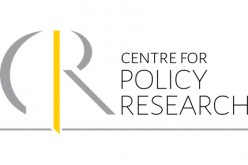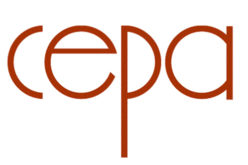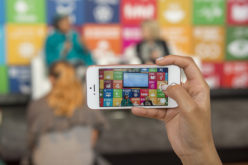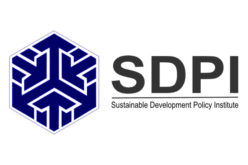From MDGs to Post-MDGs: Some Lessons from Sri Lanka
This post has been written by Ganga Tilakaratna, research fellow at the Institute of Policy Studies of Sri Lanka. She has recently launched a paper – Social Protection and MDGs in Sri Lanka: Implications for the Post-2015 Agenda – part of the Southern Voice Initiative.
Sri Lanka has made significant progress toward achieving the Millennium Development Goals (MDGs). It has achieved the target of halving poverty well before 2015. The poverty target has already been met by all the districts and sectors i.e. rural, urban and estate. In addition, the country is well ‘on track’ to achieve MDGs such as universal primary education, eliminating gender disparity in education, reducing child and maternal mortality, combating diseases like malaria, and halving the proportion of people without access to safe drinking water and sanitation.
Sri Lanka’s achievement with regard to MDGs is largely due to welfare policies implemented by successive governments over the past six decades. Many of these policies including the universal free education policy, universal free healthcare services and compulsory education for children between 5 and 14 years were implemented well before the declaration of the MDGs in 2000, and several even before the 1990 base year of MDGs. These efforts by the government helped Sri Lanka make remarkable progress with regard to literacy rates, school enrolment rates, child and maternal mortality rates, etc., at an early stage. By 1990, Sri Lanka had achieved a net primary enrolment ratio of 88%, which rose to 97.5% by 2006-07. Moreover, by 1990, infant mortality (IMR) declined to 17.7 (per 1,000 live births), while maternal mortality rate (MMR) was 42 (per 100,000 live births), both of which were reduced further during the past two decades. Reviewing these achievements sheds light on some important lessons for the future.
Keep in mind initial conditions
Despite the fall in IMR to a level that is as low as that of developed countries, achieving the MDG of reducing IMR by two-thirds from the already low level in 1990 – to 6 per 1000 live births by 2015 – is still a challenge for Sri Lanka. In contrast, countries like Bangladesh and Pakistan, that are shown to be ‘on track’ to meet this MDG target of reducing the IMR between 1990 and 2015, have recorded much higher IMRs than that of Sri Lanka[1]. Therefore,when designing goals and targets for the Post 2015, it is important to take in to account the initial conditions as well as the achievement in absolute terms, in order to assess progress made during the period specified.
Look beyond national averages
Despite MDG progress at the national level, notable disparities exist across sectors, districts and income groups with regard to goals such as child and maternal mortality and the proportion of under-weight children below the age of five. Therefore, it is important to ensure that the future goals are achieved not only at the national level, but also at the sub-national level – across regions and income groups. Interventions targeted towards lagging regions and vulnerable segments of the population are required along with the universal policies and programmes to ensure that MDGs are achieved with equity.
Build on previous progress
Further efforts are required to accelerate progress on the goals and targets where current progress towards attaining the MDGs by 2015 has been rather ‘slow’. For instance, around 50% of the population has been recorded as below the minimum level of dietary energy consumption (between 1990 and 2006-07), which has to be brought down to 25% by 2015 in order to achieve the MDG target. Moreover, the proportion of underweight children below the age of five remains high (over 20%), although Sri Lanka is ‘on track’ to achieve this MDG target by 2015. Therefore, it is important that the post-2015 development agenda takes the progress towards MDGs into account, and focuses on the ‘unfinished business’ with regard to MDGs. The post-2015 development agenda needs to be built on the current MDGs and targets.
Access is not enough
The focus of the current MDGs is largely on access to various services (or coverage of services), shown by targets/ indicators – such as the primary school enrolment ratio, the proportion of girls and boys in all levels of education, the share of women in wage employment, the proportion of one-year old children immunized against measles, and the proportion of population using improved drinking water and improved sanitation.
The Sri Lankan experience shows that despite the remarkable progress with regard to primary school enrolment and completion rates, youth literacy and gender parity in education (as shown in MDG 2 and 3), quality of education at all levels remains an issue of great concern. In particular, future efforts are needed to minimize disparities in education facilities across regions and to address the skills mismatch in the labour market by enhancing the quality and relevance of the education.
Moreover, Sri Lanka’s unemployment rate has fallen over the past decade (reaching 4% by 2012); yet, over 60% of those employed continue to be informal sector workers who often lack social security benefits. This suggests the need to create quality productive employment for the country’s workforce.
While ensuring access to services is crucial, the post 2015 agenda should look beyond ‘access’ to services (or coverage) and take into account the ‘quality’ of services as well.
Consider emerging issues
While attaining the MDGs and sustaining their progress beyond 2015 is important, there are a number of important areas that have been overlooked in the current MDGs and some emerging issues of global relevance that should be taken into account in the post-2015 development agenda. There is no consensus over the priority areas and goals to be included in the post 2015 agenda. Some of the key emerging issues suggested by the Sri Lankan experience are climate change, demographic changes (e.g. ageing), governance and emerging health issues such as non-communicable diseases.
[1] ADB (2013), Key Indicators for Asia and the Pacific 2013, Asian Development Bank, The Philippines
1,673 total views, 2 views today









